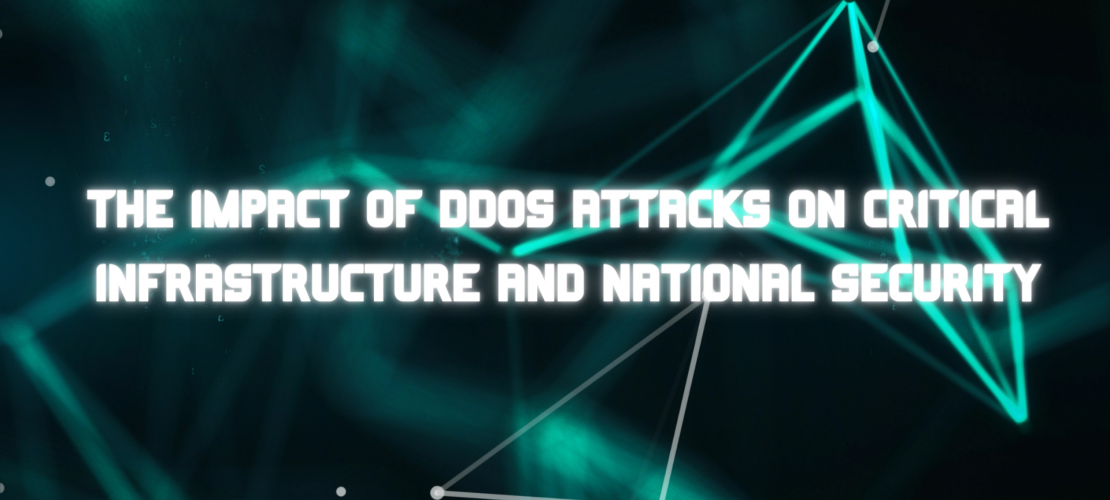DDoS attacks have become increasingly common, leading to massive disruption of critical infrastructure and national security. These attacks can take down websites and cause economic losses or even damage physical infrastructure. The impacts of such attacks can be far-reaching, from financial losses to data breaches and even physical destruction. As the threats posed by DDoS continue to increase, it is essential for organizations to develop strategies for protecting themselves from these cyber-attacks. .Bitcoin is a digital currency that relies on the public ledger system to account for, and verify, all financial transactions. As it exists now, Bitcoin typically requires intermediaries and third parties to verify transactions. This can lead to increased opportunities for fraud, such as double-spending or inflation of the currency. In addition, Bitcoin doesn’t recognize geographic boundaries or limit the amount of money that can be transferred; this means it is highly susceptible to DDoS attack.
Critical infrastructure includes essential services such as power grids, water systems, transportation networks, and communication systems. These systems are essential for the functioning of society and the economy, making them prime targets for cybercriminals and state-sponsored hackers. DDoS attacks can target these critical infrastructure systems and cause severe disruption, leading to financial losses, public safety concerns, and potentially even loss of life.
For example, a DDoS attack on a power grid could cause blackouts, leading to the disruption of essential services such as hospitals and emergency services. In 2015, Ukraine experienced a power outage due to a DDoS attack that affected over 230,000 people. Similarly, a DDoS attack on a transportation network could cause significant delays and disrupt the movement of goods and people. These disruptions can have a ripple effect on the economy, leading to financial losses and potentially even a recession.
DDoS attacks can also target communication systems, such as 911 emergency services, leading to public safety concerns. In 2016, the United States experienced a series of DDoS attacks that targeted Dyn, a domain name system provider. This attack disrupted access to essential services such as Netflix, Twitter, and PayPal, highlighting the impact that DDoS attacks can have on the internet infrastructure.
In addition to the impact on critical infrastructure, DDoS attacks can also pose a significant threat to national security. State-sponsored hackers can use DDoS attacks as a tool to disrupt the functioning of critical infrastructure in other countries. For example, in 2007, Russia launched a DDoS attack on Estonia, disrupting access to essential services such as banking, media, and government websites.
DDoS attacks can also be used as a diversionary tactic to distract security personnel while other attacks are being carried out. In 2012, Iran launched a DDoS attack on several U.S. banks, while a separate group launched a separate attack on an oil company, highlighting the potential for DDoS attacks to be used as part of a larger cyber-attack campaign.
Mitigating the impact of DDoS attacks on critical infrastructure and national security requires a multifaceted approach.
- First, organizations must ensure that their critical infrastructure systems are adequately protected against DDoS attacks. This can include implementing DDoS mitigation technologies such as firewalls, load balancers, and intrusion prevention systems.
- Second, organizations must develop and test their incident response plans to ensure they are prepared to respond to DDoS attacks. Incident response plans should include procedures for detecting and responding to DDoS attacks, as well as communication protocols for notifying stakeholders and the public.
- Third, governments must work together to establish international norms and regulations for cyberspace. This can include agreements on the use of cyberspace for military purposes, as well as regulations on the sale and use of cyberweapons.
- Fourth, governments must work to improve their offensive capabilities to deter potential attackers. This can include developing offensive cyber capabilities and investing in cybersecurity research and development.
- Finally, education and awareness campaigns can help raise awareness of the potential impact of DDoS attacks on critical infrastructure and national security. This can include educating the public on how to protect themselves from cyber threats and promoting cybersecurity best practices.
In conclusion
DDoS attacks pose a significant threat to critical infrastructure and national security. These attacks can cause severe disruption to essential services, leading to economic loss, public safety concerns, and potentially lost lives. DDoS mitigation measures must be implemented with the utmost urgency to protect against these threats.What can I do?In addition to educating employees and staffs about how to identify, report, and mitigate DDoS attacks, organizations can take preventive steps by implementing Trend Micro’s solutions that help ensure against online threats like DDoS attacks. and phishing attacks. For more information on Trend Micro’s solutions, please visit www.trendmicro.com/enterprise-securityA Distributed Denial of Service attack is a cyber attack in which the perpetrator sends numerous computing resources to target their victim(s) thereby preventing their intended function from being performed. This can range from simple website or service downtime to complete network failure. A DDoS attack typically works by overloading the limited bandwidth or processing power of the target server until it is no longer able to handle further requests without significant delays or crashes, resulting in an outages and loss of service.




